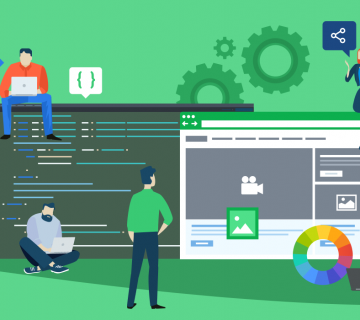Usability testing, at the very basic, involves the process of accessing the usability of a software product or application to understand how far it will be of use to the end user. However, to make usability testing fruitful in the real sense of the term, testers should follow certain best practices. In this article, let’s discuss some prominent ways in which usability testing can be made to bring about the desired results.

Top Tips to Follow
- To begin with, one should remember that usability testing is done on a product and not on the users. So, it is perfectly fine for the users to point to a feature they don’t like though it is something that you have found useful. The best way is to merge the opinion of the users and evaluate these on the basis of the knowledge and expertise of the developers and testers.
- Iterations become easier when testing is done early. At each stage, testers should track the problems and the changes made, including the ones that bring unexpected consequences. Involve at least one developer in the testing procedure because the earlier you detect an issue, the better will you be able to fix it to make the software better.
- Decide on the user group with care because usability testing depends a lot on the credible feedback of the users. Are they experienced in using a certain software product or do they come from a certain work environment? It is best to have a mix of testers and make sure keeping track of the characteristics so that you can draw correlations later.
- A typical usability testing scenario should ideally focus on exploring the user experience and not the features of the software. Plan your testing session meticulously. Decide on a set script that remains same for all the participants. Instead of guiding the users, just explain the scenario and begin by asking general questions to gradually move on to the more intricate details. The idea should be to find out what the users do even in the absence of the tester.
- Usability testing brings the best results when the user is absolutely comfortable so, make arrangement for allowing that. Keeping the testing process short is important. Try not to stretch it for more than twenty minutes as the users will eventually get tired and their feedbacks will turn out to be of little use.
- Just as it is essential to make the users feel comfortable, it is also necessary to document what they describe at each step. When testers understand the feedback well enough, they are able to deduce as to what to change and what to keep intact without breaking the functionality that affects the overall efficiency of the software.
- Finally, when you present the action plan, make sure including both the highlights from the user testing as well as the input from the developers. Once the changes are incorporated, go through another round with new participants. Make an estimate of the additional problems that crop up this time and ensure fixing these eventually.
Usability testing, when done right, promises accurate results and the effectiveness of the software product or application, which is the ultimate objective of developing one. Constant interaction with the users and a proper evaluation of how and why they react to an application in a certain way pave the way for effective usability testing.


